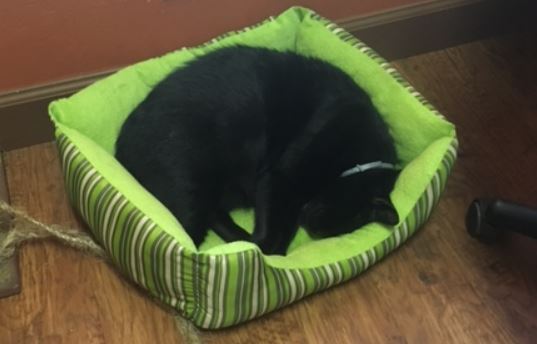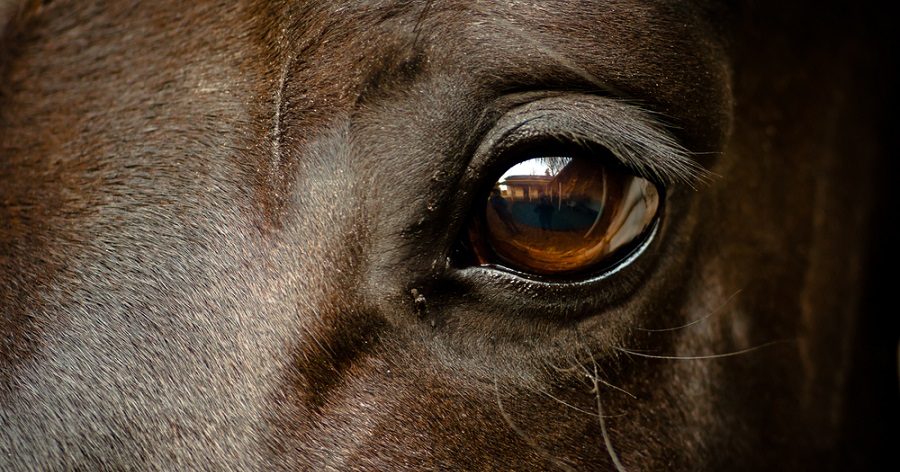
Horse Eye Problems
Whinny’s Wisdoms

Alright humans, today we’re going to talk about horse eye problems. I’m going to use my loudest squeak for this one, because as the clinic mouse, I see a lot of horses with eye problems. And some of them end up worse than they needed to be because of mistakes well-meaning owners make. As Tony would say: don’t turn a treatable eye problem into a cat-astrophe – call my docs! Fur real, you may be saving your horse’s sight!
Horse eyes are pretty cool things. The horse has a field of vision that goes about 350 degrees, almost all the way around his body. I might be a bit jealous since mine only goes about 200 degrees, but that’s all I need to keep an eye on my clinic. While horses see a whole lot of things (all the better to spook at), the downside is a horse’s eyes are prominently located and susceptible to injuries.
Any injury or problem with their eyes should be taken very seriously, as damage can escalate fast. The biggest mistake that horse owners can make is not seeking treatment early and losing the opportunity to treat the problem before it’s too late. I know some of you have some ointment laying around the barn and you’re thinking about sticking that goo in your horse’s eye. Nope. This is not a “let’s see how it looks in a couple days and decide if we need to call the vet” kind of thing. The longer you wait, the more difficult (and expensive) the eye may be to treat.

When your horse’s eye is healthy, it will be open, clear, and without any discharge. Here are some signs of problems:
- Excessive watery tears
- Yellow or green discharge
- Swollen eyelid
- Squinting
- Cloudy white or blue tinge to the eyeball
- Red or swollen conjunctiva
- Rubbing the eye or shaking the head excessively
- Obvious blood or laceration
- A growth on or around the eye
There are multiple eye-related conditions that horses can suffer and telling one problem from another should be left to your vet. Without the training and equipment to differentiate them, trying to diagnose an eye problem yourself can lead to disaster. One ointment won’t fix all problems and may actually make some conditions worse.
Whinny Wisdom: The ointment that we use for uveitis is one of the worst things you could put in an eye with a corneal ulcer!
The Exam
Once you’ve called one of my docs, you can make your horse more comfortable by bringing him to his stall, or somewhere shady, since he may be more sensitive to light than usual. A dark place is better for my doc’s exam, too. Be aware that if he has obscured vision, he might be a bit more spooky than usual. Be gentle and slow when handling him and try not to surprise him on the side he isn’t seeing well out of. Don’t try to force his eye open to have a look – that can be very painful for the horse or possibly push a foreign object like a splinter deeper into the eye. Hold off on using any medications or ointments until your vet has examined the eye.
My doc will probably sedate your horse to get a good look in the eye. She will likely apply a special dye called fluorescein to his eye to look for damage to the surface of the cornea. (bonus – this looks especially awesome on Halloween if you have a black light around. I tried it on Tony once – a black cat with glowing yellow eyes sure does freak the humans out!) My doc will look thoroughly for anything stuck in the eye or under the eyelids, like a grass awn. She will use an ophthalmoscope to look in the back of your horse’s eye and evaluate for problems that aren’t apparent to the untrained eye. She may do other stuff too, depending on what she finds, but those are the usual starters.
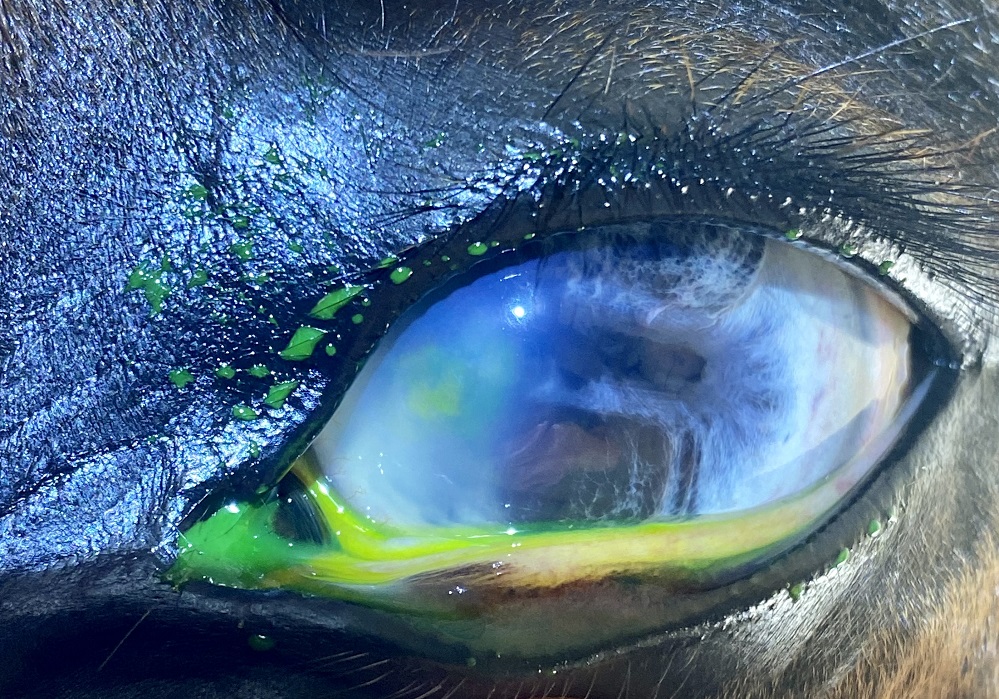
Common Conditions
There are a whole bunch of different eye conditions, and this mouse just doesn’t have the space to list them all, so here are just a few of the most common ones.
Corneal ulcers: Horses can develop an infection of the cornea (the clear surface of the eyeball) after scratching the surface of the eye. Then, bacteria or fungus in the environment get involved and bring their nasty habits along. Horses may have a white spot on their eye or the whole eyeball may look cloudy. They will usually squint and have tears running down from the eye. These infections should be seen by a vet who can determine whether the infection is on the surface or if it’s deeper in the cornea – a stromal abscess. Regular antibiotic ointment may not work on those. Also, because the infection may be caused by a fungus (and fungi laugh at antibiotics!) your vet may need to prescribe an anti-fungal medication. If your horse needs it, there are also specialized masks that provide eye protection with a molded eye cup, designed to protect the eyeball from rubbing while it is being treated.
Equine recurrent uveitis: Also known as “moon-blindness”, ERU is a disease of inflammation inside the eyeball. The signs of ERU can start mildly with tearing, squinting, or swelling, but can progress to severe eye pain and blindness, especially if left untreated. Sometimes it gets bad enough that the eye must be removed for the horse to be comfortable. Starting treatment in the early phases is important to minimize the progression of the disease. The symptoms can be pretty similar to a corneal ulcer, so it’s important that the correct diagnosis be made.
Conjunctivitis: This condition is caused by a bacterial infection of the conjunctiva, the pink tissues that line the inside of the eyelid. You may see swelling and redness of the conjunctiva and perhaps a yellow or green discharge. Windblown dust and insects cause irritation to the eye, causing the horse to rub his eyes, and bacteria can invade the tissues. Your vet will make sure the eyeball itself is ok, and if so, will provide antibacterial treatment.
Squamous cell carcinoma: SCC is one of the most common cancers found on or around the horse’s eye. It can be found on the eyeball itself, on the eyelid, or the 3rd eyelid, and is especially common on horses with white markings around their eyes (or anywhere on their face). SCC may just look like a small pink cobblestone-textured bump, or like an ulcer. If caught early, it can be treated. If not, it can be a bad deal.
Eyelid lacerations: A cut to your horse’s eyelid should always be looked at by a vet so it can be sutured if needed. Never assume it will just scar over and heal by itself. If your horse doesn’t have a functional eyelid margin, he won’t be able to keep his eye moist and painful eye ulcers can result. I know you would never dream of doing this – but I’m going to say it anyway – never cut any skin off the horse’s eyelid yourself.
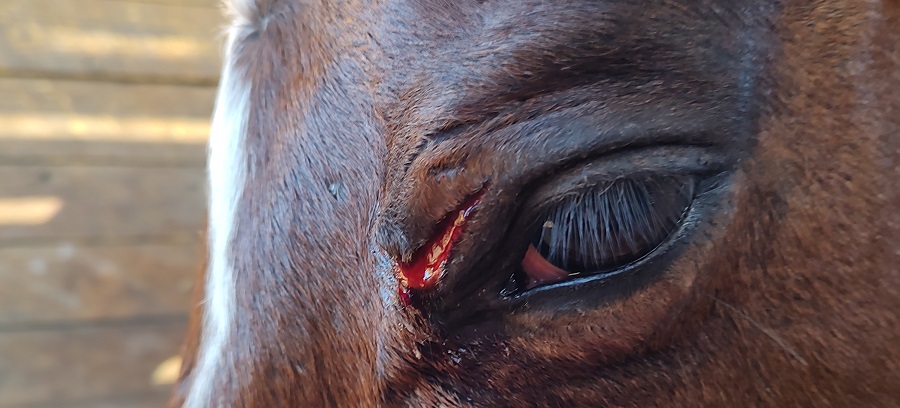
How to Avoid a Problem
Yeah, even the most careful owner may not be able to avoid eye problems, because horses are the most accident-prone creatures on the planet. But since they don’t have 9 lives like Tony (can a mouse get in on that deal?), it’s worth a shot to make your horse’s home as safe as possible! Remove or cover any sharp edges, old nails, and protruding objects from your horse’s stall, fencing, or field. Avoid moldy hay so spores don’t get in his eyes. If his hay or bedding are dusty, dampen them with water or find a less dusty kind. Check his eyes every day for injuries or abnormal appearance. If flies are numerous or if he is sensitive to them, invest in a fly mask to keep his eyes protected. For horses with white markings around their eyes, make it a UV-protectant mask to reduce his risk of squamous cell carcinoma. But be sure to check under the fly mask daily!
If your horse has an eye condition you have been working on with your vet, here are a couple of other things you can do to make things go well.
- If you see improvement after a few days of treatment, don’t stop the medication until the full course is finished! This goes for any antibiotic for any condition! You don’t want to create super-resistant bacteria that won’t respond to antibiotics, riiiight? Stopping treatment before the infection is completely resolved can result in it flaring up even worse than before.
- If the eye medication is supposed to go in the eye 4 times a day, you gotta do that. My doc knows that schedule is a pain, she really isn’t just trying to torture you. But we can’t mess around with eyes, so it’s got to get done.
- If your horse isn’t letting you get the medication into his eye successfully, talk with my doc since there may be some options (such as a sub-palpebral lavage system) to make things easier on both of you.
- Communicate with my doc about changes you notice. If you think he has been rubbing his eye more, let her know. If you think the ulcer might be a bit bigger, my doc needs to know.
Prompt treatment is the key to a successful outcome for any eye issue. Follow these guidelines and work with your vet to help your horse’s eyeballs stay beautiful! Now after thinking about eyes for so long, I think mine need a rest… I’m off for a nap.
See you next week!
~Whinny
P.S. If you want to learn more about eyes than you ever thought possible, my docs have several podcast episodes about them. The podcasts are audio only, so you can listen while you’re cleaning the barn, or driving to the barn, or grooming your horse in the barn, or putting out little treats for the mouse in your barn! You can find the podcast over on the Podcast Page, or subscribe in Spotify, Apple Podcasts, or wherever you get your podcasts.
 Whinny’s Wisdoms is the official blog of Whinny the Clinic Mouse at Springhill Equine Veterinary Clinic in Newberry, Florida. If you liked this blog, please subscribe below, and share it with your friends on social media! For more information, please call us at (352) 472-1620, visit our website at SpringhillEquine.com, or follow us on Facebook!
Whinny’s Wisdoms is the official blog of Whinny the Clinic Mouse at Springhill Equine Veterinary Clinic in Newberry, Florida. If you liked this blog, please subscribe below, and share it with your friends on social media! For more information, please call us at (352) 472-1620, visit our website at SpringhillEquine.com, or follow us on Facebook!
[jetpack_subscription_form title="Subscribe to Whinny's Wisdoms"]
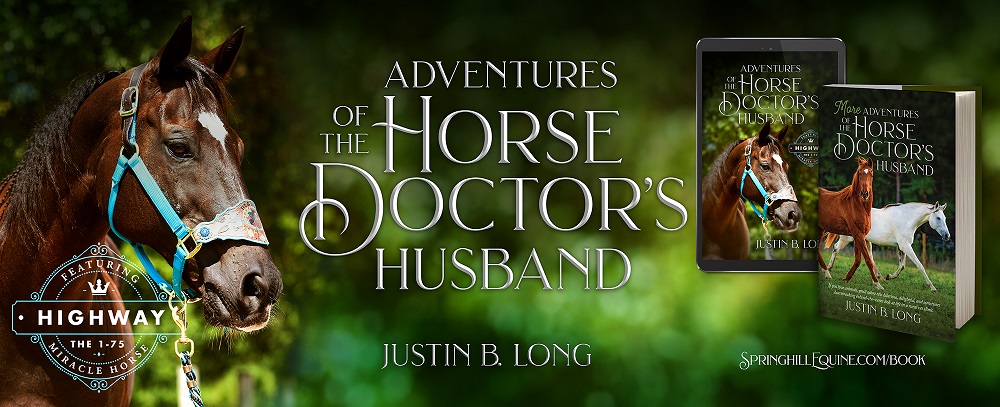
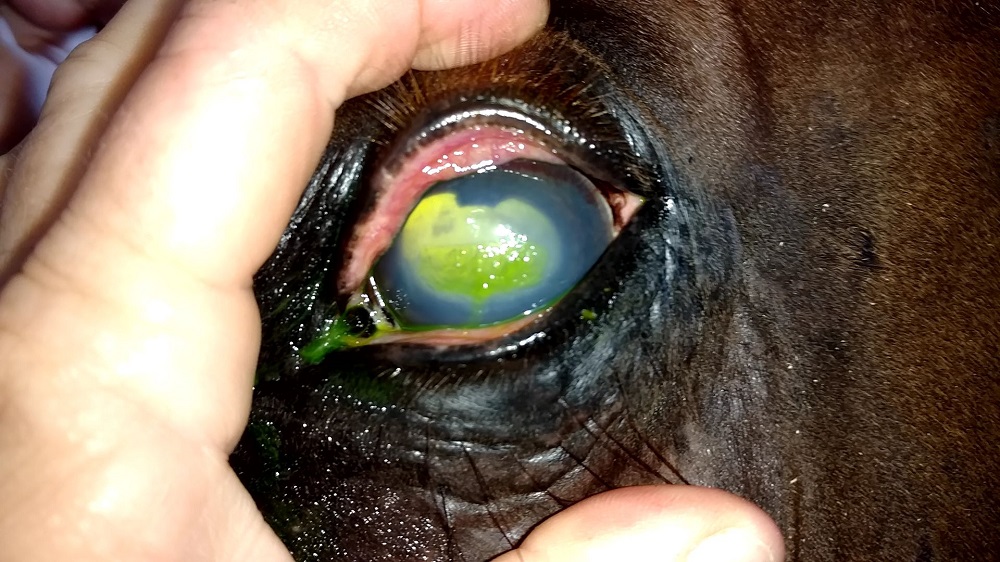
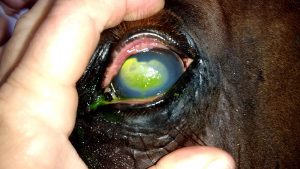

 again in a few days. Lots of eyes heal perfectly well this way. The ones that don’t, however, are the ones my team worries about. My minions have all had the joy of treating ulcers in eyes. They say what makes this one Number 1 on their list is that everything can be done absolutely perfectly, and things can still go bad. These ulcers are also very expensive and extremely time consuming. Treatment very quickly goes into the thousands of dollars, and is a minimum of 4 weeks. My minions also agree eye problems are a great reason to have major medical insurance on your horse!
again in a few days. Lots of eyes heal perfectly well this way. The ones that don’t, however, are the ones my team worries about. My minions have all had the joy of treating ulcers in eyes. They say what makes this one Number 1 on their list is that everything can be done absolutely perfectly, and things can still go bad. These ulcers are also very expensive and extremely time consuming. Treatment very quickly goes into the thousands of dollars, and is a minimum of 4 weeks. My minions also agree eye problems are a great reason to have major medical insurance on your horse! much, much less than you pay for. My minions have seen broken teeth, missed tumors, infections caused or made worse, and, simply put, really bad floats done. Even worse, many lay floaters sedate horses which is AGAINST THE LAW. My Docs went to school for a really long time to know all the things that can go wrong when they sedate a horse. They drive around with a truck full of stuff to manage problems if things do go wrong. My Docs have the knowledge to understand how that little thing they see can be an indicator of BIG problems. I can’t be any clearer: Lay floaters are not a good answer for your horse’s health. Dentistry should be done with bright lights, sedation, a speculum, and a doctor.
much, much less than you pay for. My minions have seen broken teeth, missed tumors, infections caused or made worse, and, simply put, really bad floats done. Even worse, many lay floaters sedate horses which is AGAINST THE LAW. My Docs went to school for a really long time to know all the things that can go wrong when they sedate a horse. They drive around with a truck full of stuff to manage problems if things do go wrong. My Docs have the knowledge to understand how that little thing they see can be an indicator of BIG problems. I can’t be any clearer: Lay floaters are not a good answer for your horse’s health. Dentistry should be done with bright lights, sedation, a speculum, and a doctor.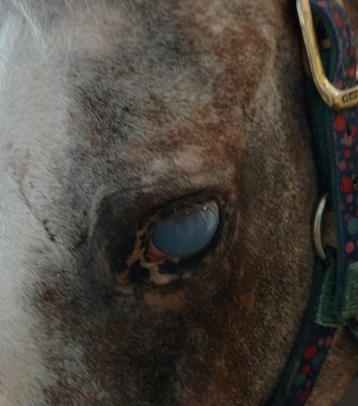
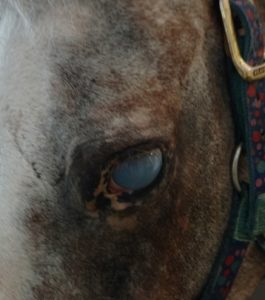 Every Eye Injury is an Emergency
Every Eye Injury is an Emergency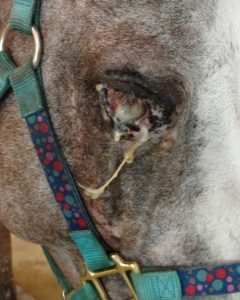 Iris Prolapse
Iris Prolapse